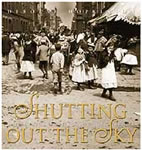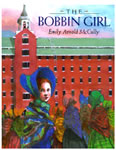 E-Scrapbooking
E-Scrapbooking
Scrapbooking is about synthesis. Young people pull ideas together and organize them in a meaningful way. Design PowerPoint Sidekicks that combine critical and creative thinking by providing students with visual and text resources they can use to build and share their understandings.
Go to e-scrapbooking: projects for lots of ideas.
Then and Now Scrapbook
 Comparing past and present is a great foundation for a scrapbook. Ask students to divide the screen in half and write about before and after, then and now, or any other type of comparison. Provide information, images, audio, and video. Or, let students create their own original materials. Use a PowerPoint Sidekick to get the project started.
Comparing past and present is a great foundation for a scrapbook. Ask students to divide the screen in half and write about before and after, then and now, or any other type of comparison. Provide information, images, audio, and video. Or, let students create their own original materials. Use a PowerPoint Sidekick to get the project started.
What was it like to be a child in the 1700s? Let's make a Then and Now scrapbook.
Download and explore the Jobs: Then and Now (PPT) PowerPoint Sidekick. This project uses the Colonial Williamsburg Trades website photographs. You may wish to provide all the photographs or let children copy and paste from the website depending on the age of the children.
Web Resources
- Colonial Kids from ThinkQuest
- Colonial Williamsburg KidZone
- Colonial Williamsburg Trades
- Colonial Williamsburg Audio and Video - podcasts, photographs, videos, interactives
- Monticello Image Galleries
- Plimoth Plantation
- George Washington's Mount Vernon
- Life in the 13 American Colonies - adapt these ideas for a PowerPoint Sidekick
- Colonial America Interactive - story
Lesson Ideas
- American Colonial Life in the Late 1700s: Distant Cousins (Grades 3-5)
- Declare the Causes: The Declaration of Independence (Grades 3-5)
- Packing the Pilgrim’s Trunk: Personalizing History in the Elementary Classroom (K-2)
Variations
- How would the clothing, food, activities, and toys be alike and different?
- Use links to images for toys, appliances, furniture, household activities, household objects 1 and 2, lighting, containers (also lots of others)
- Use state history resources such as ExplorePAhistory and lessons.
- Compare different time periods with today
Primary Source Documents
- Adapt the Primary Source of the Month ideas from Cyberbee
- Find great ideas for elementary grades at teacher blog called A Very Old Place.
- Check out the primary sources at footnotes.
- Try some of the following websites for good historical photos and visuals. Look up "children" for good examples with kids
Create your own Now and Then PowerPoint Sidekick.
Character Scrapbook
Create a scrapbook based on a book character. Based on your reading, what does the character like and dislike? What might they put into a scrapbook about themselves? If possible, include a variety of materials including drawings, photographs, maps and other materials. Think about the plot and setting of the book. What would the character eat, drink, and own?
Character scrapbooks work particularly well for historical novels. Read the historical fiction book Bread and Roses by Katherine Paterson. Then, read the nonfiction book Shutting Out the Sky by Deborah Hopkinson.


 Open and explore the Bread and Roses, Too (PPT) PowerPoint Sidekick. Notice that the directions are placed on the Speakernotes. The Sidekick provides photographs, sounds, and web links to help young people create a scrapbook based on one of the characters. The last page of the scrapbook is different. Students are asked to pretend that their character is now 100 years old and looking back on the scrapbook. They take one idea from their scrapbook and compare it to what life is like today. How is life in the early 2000s different from life in the early 1900s? The example below shows picketing then and now.
Open and explore the Bread and Roses, Too (PPT) PowerPoint Sidekick. Notice that the directions are placed on the Speakernotes. The Sidekick provides photographs, sounds, and web links to help young people create a scrapbook based on one of the characters. The last page of the scrapbook is different. Students are asked to pretend that their character is now 100 years old and looking back on the scrapbook. They take one idea from their scrapbook and compare it to what life is like today. How is life in the early 2000s different from life in the early 1900s? The example below shows picketing then and now.
Lesson Resources
- Mass Moments
- Teaching Tolerance
- Lower East Side Tenement Museum - New York
- Resources from Thinkfinity
Labor Movement
Child Labor
- Child Labor in Factories
- Child Labor Photographs
- Spartacus Education: Child Labor
- History Place: Child Labor in America 1908-1912 - girl in factory,
- Modern Issues: Free the Children, In Our Own Backyard
Immigration
- Immigration from Scholastic
- Immigration: Then and Now - Teaching ideas from Instructor
Textile Workers 1800s
Variations
- Rather than focusing on a character, ask children to invent a character using an historical photo as inspiration.
- Ask students to learn more about a real person who lived during the same time period. What would happen if this real person interacted with the character from the book?
- Expand the activity to literature circles. Ask students to read books about the labor movement during different type periods and compare their scrapbooks. For instance, Lyddie by Katherine Paterson and The Bobbin Girl by Emily Arnold McCully are set in the 1840s. Or, focus on the Triangle Factory Fire of 1910 with books such as Dear Emma
by Johanna Hurwitz. - Rather than reading entire book, focus on the labor movement articles from Scholastic. Such as Child Labor Around the World from Scholastic and Lucretia Mott: Woman of Courage from Scholastic.




